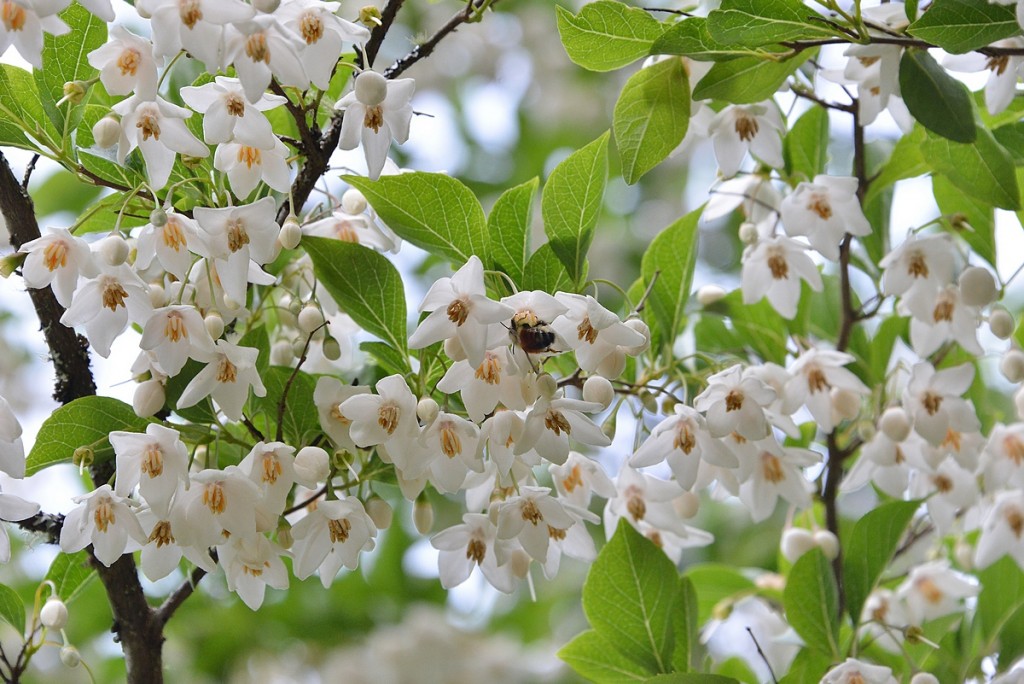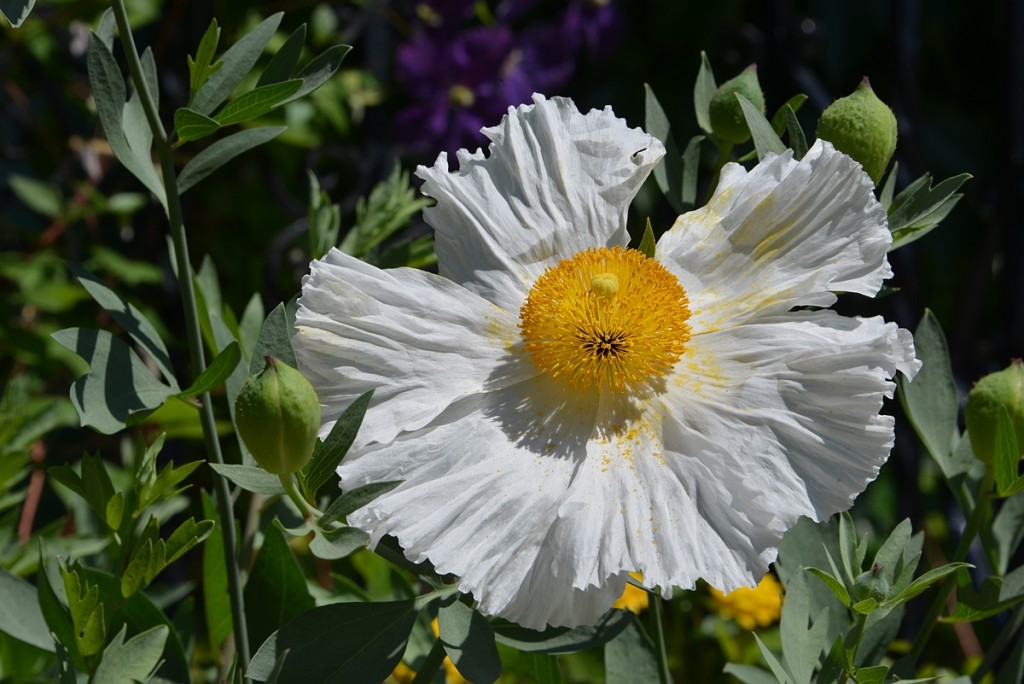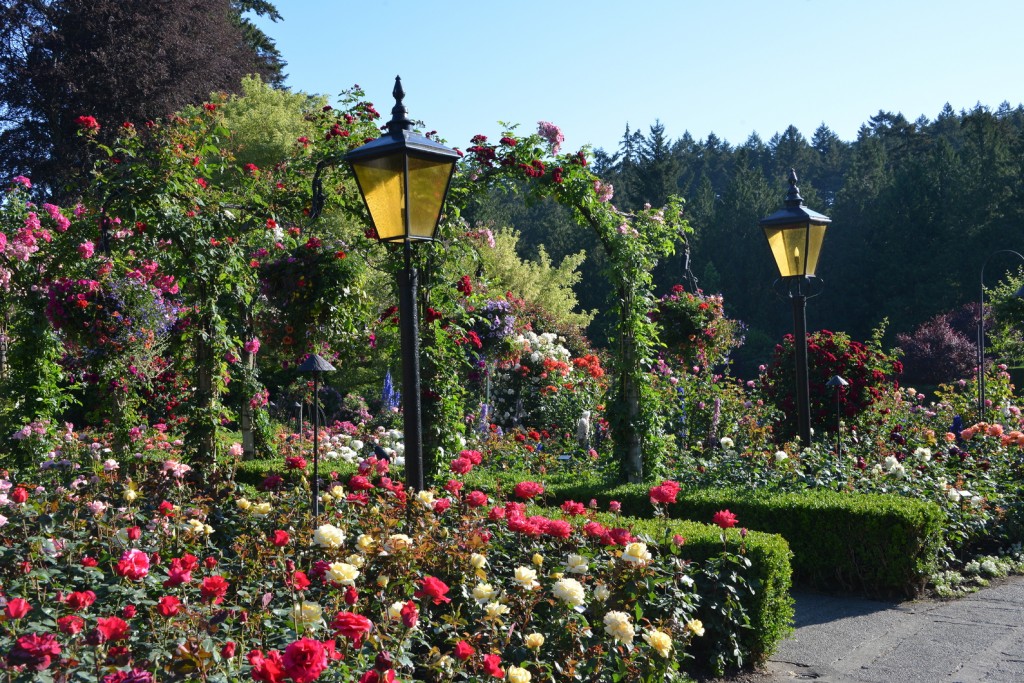What’s in Bloom Now? Garden Updates June 24 – 30
By Thea Hegland
This past week has been full of interesting things; not only is National Gardens Days running from June 16 -24, it is also happens to be Pollinator Week from June 18 -24.
Pollination at The Gardens
The Gardens’ certified Pollinator Steward, Tracy Ferreria educates our gardening staff and instills proactive measures are taken to ensure the plant material here includes a variety of excellent forage plants for pollinators. From Lavendula and Styrax to Erica and Sedum, you will find plenty of bee-friendly plants at The Gardens.

Visit the Plant Identification Centre where you will find some excellent resources and also gain some informative knowledge about the importance of bees in the garden.
Summer Blossoms
The summer display is really coming together – all the perfect June weather has brought on a riot of blossoms. The many perennial borders have begun the progression of endless summer flowers creating significant structure to the summer show. Classics such as Hemerocallis (Daylily), Phlox, Helenium (Sneezeweed) co-exist with some unusual flowers such as Cardiocrinium (Giant lily) and Leonotis (Lion’s ear).
My favorite flower this week is the Romneya coulteri (Tree poppy), located in the Mediterranean Garden, with its fragrant and showy white flowers with bright yellow stamens. There is also one located by the stairs of the historic Butchart Residence in the Piazza area – it is a real stunner.

Plants that are currently blooming
- Abutilon
- Achillea (Yarrow)
- Alocasia (Elephant’s ear)
- Astilbe
- Anthriscus sylvestris ‘Ravenswing’
- Astrantia
- Baptisia (False indigo)
- Begonia (Tuberous and fibrous)
- Brugmansia (Angel’s trumpets)
- Calceolaria (Scotsman’s purse)
- Cardiocrinium (Giant lily)
- Cephalaria gigantea (Yellow scabious)
- Centaurea montana
- Chionanthus virginicus (Fringe tree)
- Cladatris lutea (Kentucky yellowwood)
- Clematis
- Colocasia (Taro)
- Cornus kousa (Korean dogwood)
- Crambe
- Davidia involucrata (Dove tree)
- Delphinium
- Deutzia
- Dianthus
- Digitalis (Foxglove)
- Disporum (Fairy bells)
- Eremurus (Foxtail lily)
- Fuchsia
- Heliotropium (Cherry pie plant)
- Hemerocallis (Daylily)
- Hydrangea petiolaris (Climbing Hydrangea)
- Hypericum (St. John’s wort)
- Inula
- Impatiens
- Iochroma cyanea
- Iris
- Kalmia (Mountain laurel)
- Kolkwitzia (Beauty bush)
- Laburnum (Golden chain tree)
- Lantana
- Leptospermum (Tea tree)
- Lobelia
- Maglieta
- Matthiola (Stock)
- Meconopsis (Blue poppy)
- Nectaroscordum
- Pachystachys lutea (Lollipop plant)
- Paeonia (Peony)
- Paeonia lutea (Tree peony)
- Pelargonium (Geranium)
- Pentas
- Persicaria (Knotweed)
- Petasites
- Philadelphus (Mock orange)
- Phlomis
- Podophyllum (Mayapple)
- Poncirus trifoliata (Hardy orange)
- Punica granatum (Pomegranate)
- Rheum
- Romneya coulteri (Tree poppy)
- Rosa (Rose)
- Salvia
- Spartium junceum (Spanish broom)
- Stachys marcantha
- Styrax japonicus (Japanese snowbell)
- Syringa reticulata (Japanese tree lilac)
- Thalictrum (Meadow rue)
- Tradescantia (Spiderwort)
- Viburnum
- Viola
- Weigela
- Wisteria


